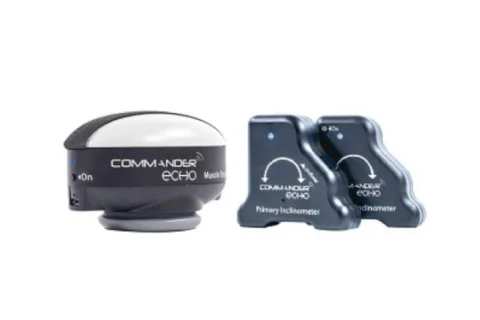Range of Motion Test in Suffolk County, New York
Our providers are certified in th Range of Motion test, and performed muscle testing

Healthcare providers will provide an initial examination and assess the patient. Next they form an accurate diagnosis and treatment plan for recovery. One of the components of the exam is specific measurements of certain body parts. For example, patients with neck pain and stiffness might have difficulty moving the neck related to a car accident injury. When this happens, the doctor will ask the patient to turn their neck to the sides. Then the healthcare provider will use tools such as inclinometers, goniometers, and dynamometers. These fall within the category of range of motion test & muscle tests. Better equipment will yield more accurate findings. Sometimes patients will suffer permanent loss of motion. This is best documented with two tests. The Digital Range of Motion (dROM) and Digital Manual Muscle Testing (dMMT) are both used.
Digital Range of Motion Testing in Suffolk, NY (dROM)
A person’s range of motion is their ability to move a joint. Further, a joint is where two bones come together and motion usually occurs. For example, the elbow is a joint. It is where the humerus, the ulna and radius come together. This joint enables us to flex and extend our arm. Every joint in the body should yield a normal range of motion test. These normal vary on a patient to patient basis. However, the gold standard of normal is the American Medical Association’s guidelines. There is a normal guideline for every joint or part of the body.
Doctors treating joint problems find it crucial to determine what a patient’s range of motion is. This is before treatment begins and if with an injury, immediately after injury. Moreover, this serves to first document the degree of impairment a patient has. Next, doctors establish a starting point of treatment. During the treatment phases, doctors perform range of motion tests. Then they determine how a patient is progressing with treatment. Finally, they decide if the patient reached maximal improvement.
Doctors measure the range of motion of different parts of the body in varying ways. Some doctors do a range of motion test by observing patients move in different directions. Others may use a goniometer (a measuring devices with numbers on it) to do the range of motion test. Others may use an arthrodial protractor (A big compass) to measure movement. But the gold standard of measure today is Dual Inclinometry. This is according to the AMA’s guide to Impairment and disability (5th edition). Inclinometry is an electronic means of measuring range of motion. The measurement is completely without any examiner input or bias. This is important when establishing how injured a person is and their degree of disability. Furthermore, it will also determine their response to treatment.
Digital Manual Muscle Test (dMMT)
Doctors use muscle testing to determine how strong a person’s muscles are. This is important after injury to establish a starting point in treatment. The goal is establishing the return of normal strength after treatment.
It is very common for a muscle on one side of the body to be weaker than the other side in an injured person. Further this can be due to injury to the muscle itself or a problem with the nerves going to the muscle that make it weak. For example, if a person has a car accident injury to their neck, they may have a herniated disc. Further, this may cause a pinched nerve which will choke off nerve flow to a muscle in the body. This will cause pain and weakness in this muscle remote from the spine. This is common in conditions such as sciatica (pain down the leg). Likewise it is also found with arm and hand pain (brachial neuritis). The nerves are being pinched at the spine but rather causing pain to where they travel.
Therefore, muscle testing is part of the diagnostic workup of an injured patient. Injured nerves are evident in strength and weaknesses determined. Next, doctors identify affected spinal levels. These include injuries to the muscles themselves or underlying pathologies. Also, weak muscles can be due to many causes.
There are different methods or measuring muscle strength. The simplest way is for the doctor to put pressure against a muscle and ask the patient to resist the pressure. Then, the doctor tries to see if there is a difference between left and right. In some cases if there is no left or right, the doctor checks if the muscles are weak or strong (ie: extension of the neck). This method is very subjective on the part of the doctor and the patient’s effort can affect the outcome of the test.
The gold standard of muscle testing today is a dynamometer. This is an electronic hand-held device which relays information back to a computer. In addition the device relays the exact number of pounds of force the muscle is producing. Doctors conduct the muscle test 3 consecutive times. Valid tests must contain results within a certain degree. This takes the subjectivity away from the examiner. Finally, it also accounts for the patient not trying with every repetition. Finally, this tool gives the doctor a reliable reproducible result that is accurate.
Chiropractic
EMG Test / Nerve Testing
Range of Motion Testing
Physical Therapy

Spinal Decompression

Orthotics & Bracing

Digital X-Ray

MRI Interpretation
MUA Procedure
Functional Testing – Range of Motion & Muscle Tests – Disclaimer
The information provided on this page or article is for informational purposes only and should not be considered as medical advice. The content is not intended to diagnose, treat, or recommend a specific course of treatment for any medical condition. It is designed to help users understand various standards of care and medical conditions. No information on this website establishes a doctor-patient relationship, and it should not be relied upon as a substitute for professional medical advice. Always seek the advice of your physician or qualified healthcare provider with any questions you may have regarding a medical condition or treatment.
